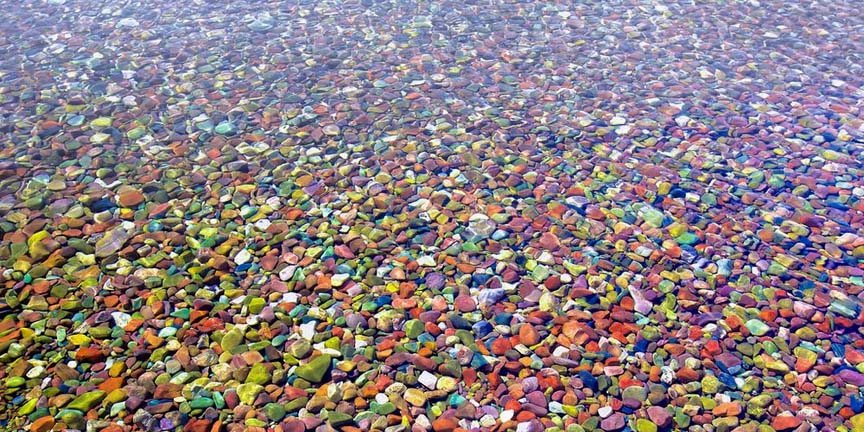♫ My home's in Montana, I wear a bandana
My spurs are of silver, My pony is gray
♫While riding the ranges, My luck never changes
With foot in the stirrup, I'll gallop away
Thatís the first song I ever learned (except for maybe Happy Birthday) from my sisterís book when I was learning to read.
So I knew all about Montana, then some teacher burst my bubble telling thereís mountains too. The first time I went there
confirmed that, but it wasnít until I got to Glacier National Park that I truly appreciated the mountains of Montana.
There are 700 lakes, 200 over 5 acres, 12 over 1,000 acres, in Glacier Park, and the rugged landscape may be why only 131
have names. Lake McDonald is typical in that the water is crystal clear because itís too cold year round for plankton or many
water plants to grow. Mama Nature makes up for that by giving it a beautiful bottom.
HmmÖ A lot of beautiful bottoms Iíve met were very cold toward me.

Anyway, the reason they have such colorful pebbles is there is many types of rock in these mountains, and some of each type
were ground to little bits by the glaciers moving south from Canada. See, those immigrants made it a better place.
When the glaciers retreated 10,000 years ago, the cycles of rain and snow moved a lot of those pebbles into the low spots along
with the water, making lakes with pretty bottoms.

The color of the rocks is determined by iron. A couple years back, maybe 100 million give or take a little, the bright red rocks were
in a shallow ocean and the iron oxidized from tidal exposure to the air. Red ones often have old ripple marks or mud crack lines.
The green rocks were in deeper water and have the same amount of iron but werenít exposed to oxygen so less oxidation.
The dark-colored rocks are from the red and green rocks seeing intense heat and pressure in the forming of the Rocky Mountains.
So if you can, by all means check it out, the areas further north in Canada too, before the lakes warm up to grow stuff.